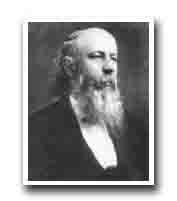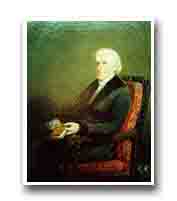Materia Medica by Dunham: A Comprehensive Guide to Homeopathic Remedies
 Homeopathy is a natural and alternative system of medicine that uses highly diluted substances to stimulate the body’s innate healing ability. One of the most important aspects of homeopathic practice is the use of Materia Medica, which is a collection of information on the therapeutic properties of various substances. Materia Medica by Dunham is a comprehensive guide to homeopathic remedies that was written by Carroll Dunham, a well-known homeopath and physician of the 19th century. In this article, we will explore the history and significance of Materia Medica by Dunham, its content and organization, and its relevance to modern homeopathy.
Homeopathy is a natural and alternative system of medicine that uses highly diluted substances to stimulate the body’s innate healing ability. One of the most important aspects of homeopathic practice is the use of Materia Medica, which is a collection of information on the therapeutic properties of various substances. Materia Medica by Dunham is a comprehensive guide to homeopathic remedies that was written by Carroll Dunham, a well-known homeopath and physician of the 19th century. In this article, we will explore the history and significance of Materia Medica by Dunham, its content and organization, and its relevance to modern homeopathy.
A
C
History and Significance of Materia Medica by Dunham
Carroll Dunham was born in 1828 and received his medical degree from the College of Physicians and Surgeons in New York City in 1850. He became interested in homeopathy and studied under the famous homeopath, Constantine Hering. In 1856, he published his first book on homeopathy, called “Lectures on Materia Medica.” He later revised and expanded this book, which became known as “Materia Medica by Dunham.” The first edition was published in 1870, and the final edition, which was edited by his son, was published in 1891.
Materia Medica by Dunham is significant because it was one of the first systematic attempts to organize and classify homeopathic remedies. Dunham used his extensive clinical experience and knowledge of the provings (the symptoms produced by taking a substance) to describe the therapeutic properties of over 200 remedies. He also included information on the source, preparation, and dosage of each remedy. This work became a standard reference for homeopaths and is still used today.
Content and Organization of Materia Medica by Dunham
Materia Medica by Dunham is organized alphabetically by remedy. Each remedy is described in detail, with information on its source, preparation, and therapeutic properties. Dunham used the provings and his clinical experience to describe the symptoms and conditions that each remedy is useful for. He also included information on the mental and emotional states associated with each remedy. This comprehensive approach makes Materia Medica by Dunham a valuable resource for homeopaths who are selecting remedies for their patients.
Relevance to Modern Homeopathy
Despite being written over a century ago, Materia Medica by Dunham is still relevant to modern homeopathy. Many of the remedies that Dunham described are still used today, and his descriptions of their therapeutic properties are still considered accurate. Homeopathy has evolved over the years, but the basic principles and practice of Materia Medica remain the same. Dunham’s work serves as a foundation for the modern practice of homeopathy.
Conclusion
Materia Medica by Dunham is a classic text in the field of homeopathy. It is a comprehensive guide to over 200 remedies, organized in a way that is easy to use and understand. Dunham’s clinical experience and knowledge of the provings make this work a valuable resource for homeopaths. Despite being written over a century ago, it is still relevant to modern homeopathy and serves as a foundation for the practice of Materia Medica today.
FAQs
- What is Materia Medica by Dunham? Materia Medica by Dunham is a comprehensive guide to homeopathic remedies written by Carroll Dunham in the 19th century.
- What is the significance of Materia Medica by Dunham? Materia Medica by Dunham was one of the first systematic attempts to organize and classify homeopathic remedies. It is still used today as a reference for home


